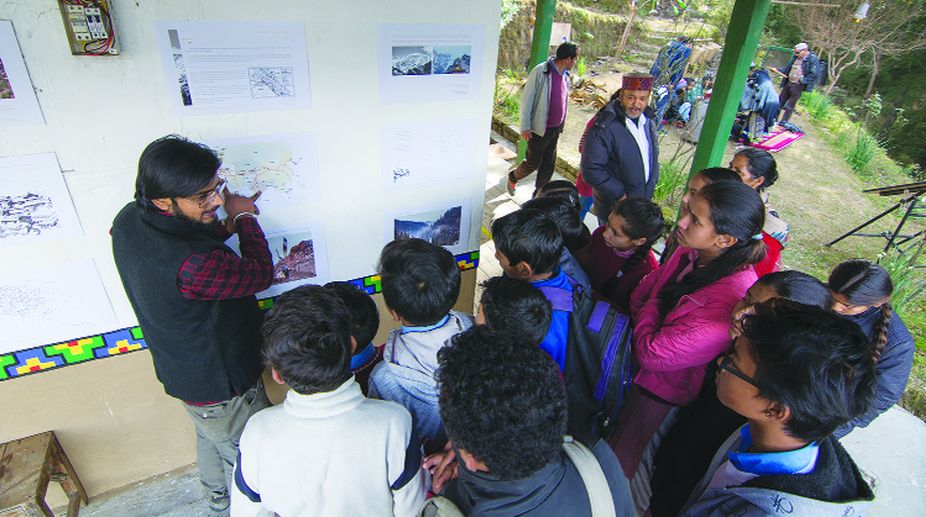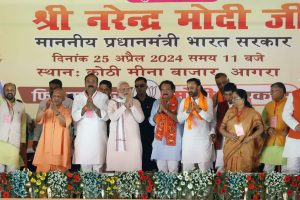Those bemoaning the fact that timeless Himalayan traditions are on the path to extinction have reason to cheer with the upcoming business venture, ‘NORTH’ conceptualised by a Shimla- based young Himachali entrepreneur, Rahul Bhushan.
NORTH that takes its name as an abstract reference for a place high in the Himalayan mountains, is a blend of art, design residency, a centre for Himalayan arts and crafts and a ‘research-design-build’ studio and workshop. It is a growing community of artists, eco-conscious people, creative professionals, architects, designers that is all set to make a difference and to make a positive impact on the local community and promote tourism in its own ways.
Dedicated to the preservation of Himalayan arts, crafts and culture, Rahul Bhushan (26) said, “The vision of NORTH is about keeping alive the timeless Himalayan traditions in content, form and process and to inspire an eco-conscious lifestyle driven by wilderness, creativity so as to have a positive impact on the local community, promote their art and local architecture along with tourism as well as preservation of the environment.”
Rahul, who grew up admiring nature, the local lifestyle and architecture, said, “I had always felt a sense of responsibility to preserve the essence of our indigenous culture, arts, craftsmanship and community. As a payback I am constantly endeavouring and striving for a sustainable and better Himachal Pradesh through innovation,” he said.
A graduate in Architecture from NIT, Hamirpur, and a post-graduate from CEPT University, Ahmedabad, in crafts and technology, an exchange programme to HFT Stuttgart, Germany, and some design projects equipped Rahul to pursue his cherished dream of initiating NORTH.
The turning point in his life and inspiration came following his research thesis on “Indigenous building practice system in western Himalayas” for his post graduation project at CEPT University, Ahmedabad, about four years ago.
He was disturbed by the dying traditional art and architecture of his home state that is gradually giving way to modernisation, which is even palpable in the rural and remote areas.
“Once back home, I took off to learn more and explore more before starting my own architecture and design studio, along with some innovative initiatives. I designed projects that range from art installations using recycled, reclaimed materials, design of furniture and interior elements to design of sustainable houses, exhibitions, conservation projects and public projects of urban scale,” he said.
To translate the ideas into reality he has conducted many hands-on academic workshops, lectures on Himalayan architecture, planning, conservation, adaptive reuse and revitalisation of indigenous building system “Kathkuni” (vernacular wooden craftmanship) of Himachal Pradesh that include wood working and carving, metal works and handloom which involves people from all walks of life. His work also involves research-design-build projects based on environmental and development issues in Himachal Pradesh. Talking about one of his workshops that was aimed at conservation of heritage property in Naggar, Kullu district, Rahul said, “Along with guests, artists and local craftsman, we were able to restore a forest building constructed by the British in 1927 which was abandoned and almost dilapidated. The building was restored, along with landscaping of the surrounding area.”
Promoting such events and activities, Rahul is inviting guests and artists from the country and overseas through social media. The tourists besides enjoying leisure time in a rural setting and getting exposure to the art and handicraft of the locals, are also leaning skills from local artisans, being involved in such activities.
During one of Rahul’s visits to Kinnaur in 2015 as part of his research thesis to understand traditional architecture, he met 101-year old Shyam Saran Negi, Independent India’s first voter, who had shared his serious concerns about the fading local traditional architecture.
Rahul even coaxed Negi to educate one of his family members to keep and maintain the ancestral house, almost a century old, which he considered to be an asset.
“The structure and system of how government works in the country is very stiff and lacks creativity. This is the biggest obstacle and challenge, which needs to be addressed, not only to preserve traditional art, but also when it comes to formulating eco-tourism, smart city or village, community and livelihood concerns,” Rahul said, adding that the gaps can be filled by creative, qualified, skilled and passionate professionals.











